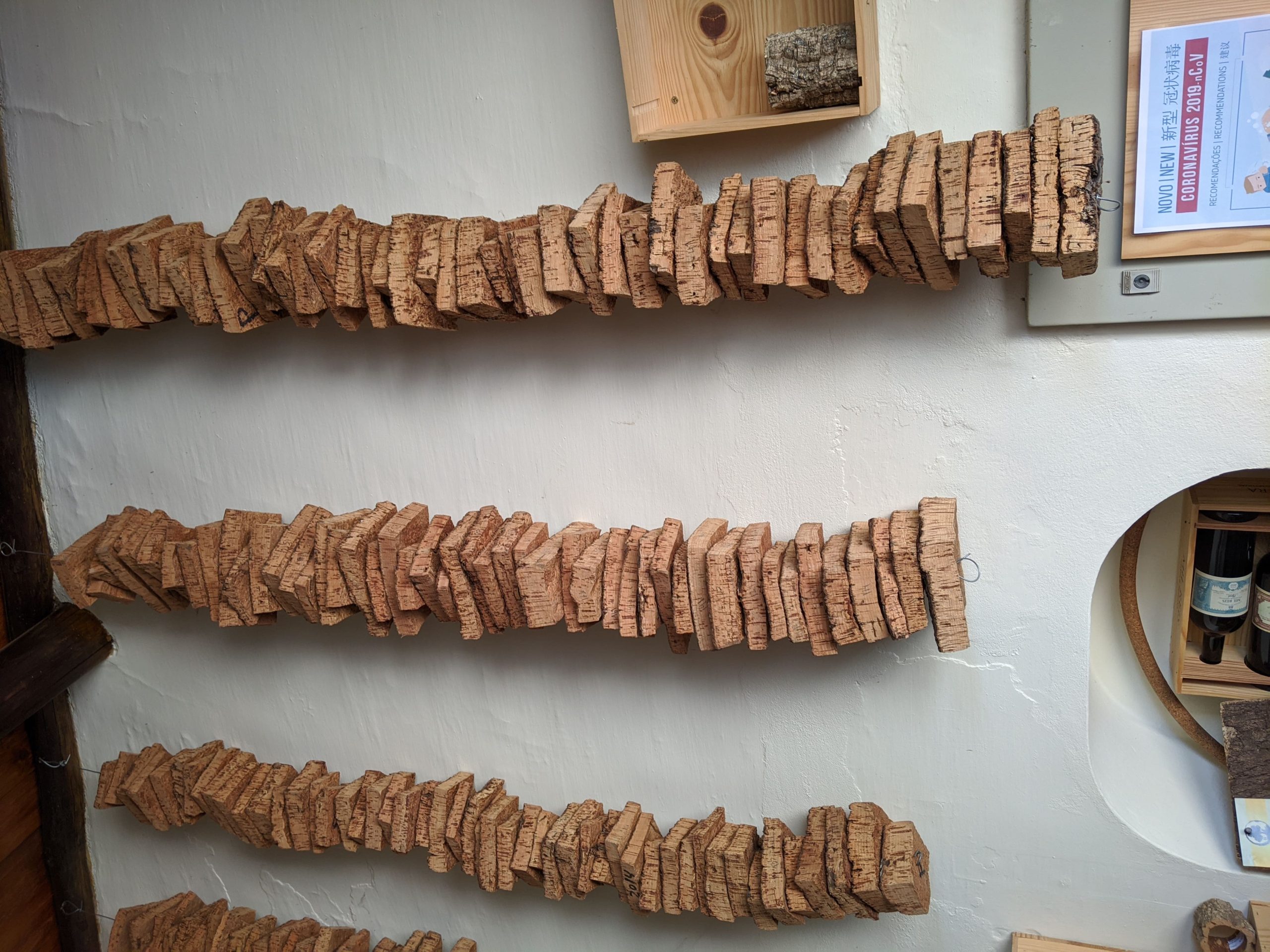Cork is an incredibly valuable commodity for Portugal. About 50% of cork worldwide is grown dating back to use by the Greeks, Romans, Egyptians, Chinese, Babylonians, Assyrians, Phoenicians and Persians. The highest quality cork comes from the cork oak tree, most commonly found in this area where they have developed a thick layer of cork bark as a protective measure against harsh conditions such as drought or bush fires.
Harvesting cork is a lucrative job that requires skill and patience. One must wait 25 years after planting until cork is ready to harvest. After that, cork bark can be harvested every 9 years between the months of May and August.


Cork oak trees are more resistant to fire than eucalyptus and pine trees. Additionally, the Portuguese government wants to incentivize farmers to plant more oak trees due to the important role they play in helping to combat climate change. No other human-made material is able to emulate the remarkable properties of cork. It’s lightweight, compressible, elastic, waterproof and fire-retardant. The trees are not cut down during harvesting, so that cork is one of the most sustainable and renewable materials in the world.
We all typically associate cork with wine, but there are seemingly infinite uses for this unique material. Throughout history, cork has been used in the following ways:
- In shoes, buoys and fishing equipment long before Christ was born.
- In the 1st century, it was written that cork oaks were consecrated to the god of Olympus, Jupiter, and their leaves and branches were used to crown victorious athletes.
- The Portuguese ships and caravels that set sail in search of new worlds used cork oak wood for the parts that were most exposed to inclement weather. Besides being exceptionally strong, it never rotted.
- It was used to insulate the cells of the Capuchos convent in Sintra, from the cold and humidity.
- In car parts such as seats and tires, and in military equipment during the Second World War.
- In the 1950s, an American company produced the first agglomerated cork tiles with a vinyl film covering.
- In the NASA shuttles and the ESA spacecraft.
- In top competition kayaks, tennis and cricket balls, as a base of artificial sports fields.
- It is currently used for international award-winning designer fashion items, and in many types of shoes.
Interesting facts about cork:
- Portugal has a third of all cork forests, while Spain has a quarter.
- It is the only material with a negative carbon footprint.
- It can take 18 years in total before the tree can produce cork of good enough quality to be used as a stopper for wine.


